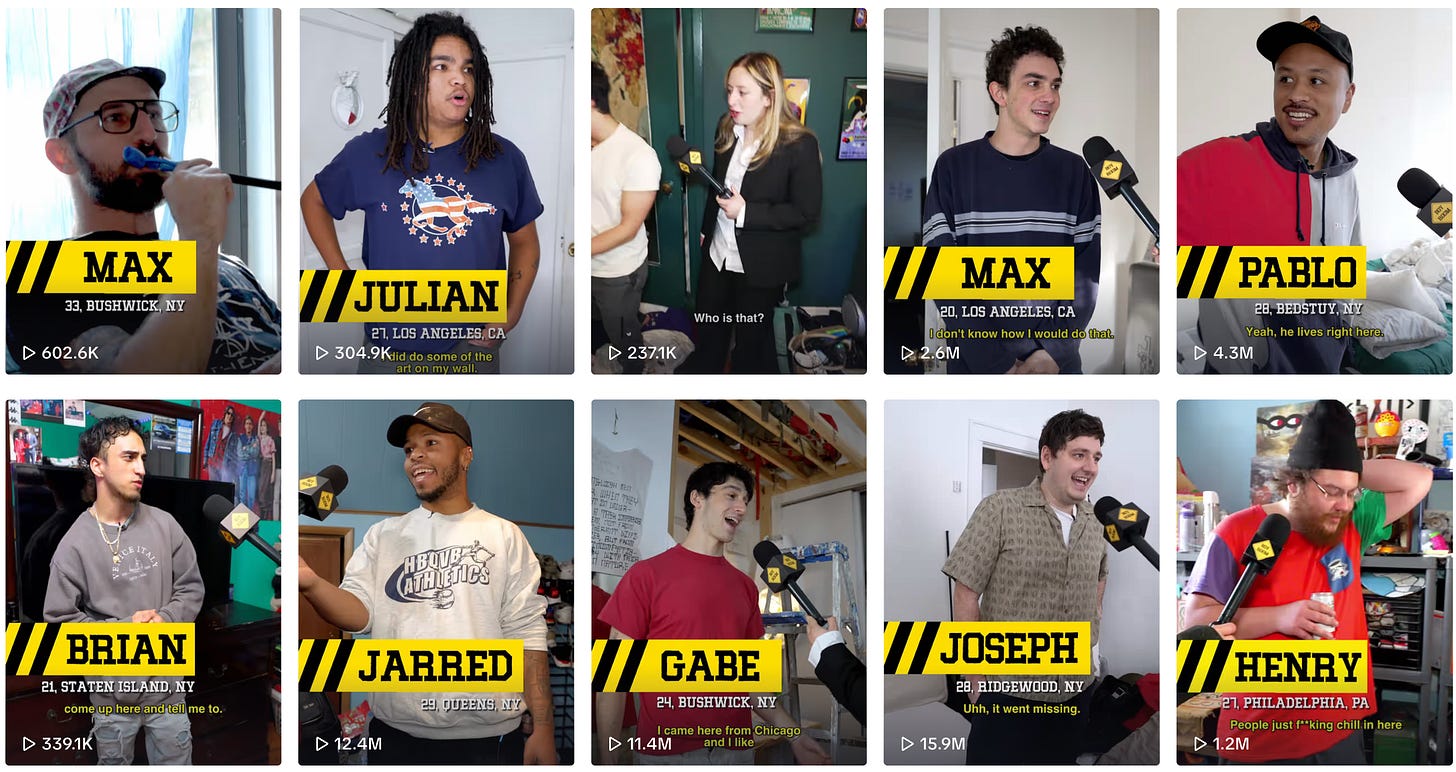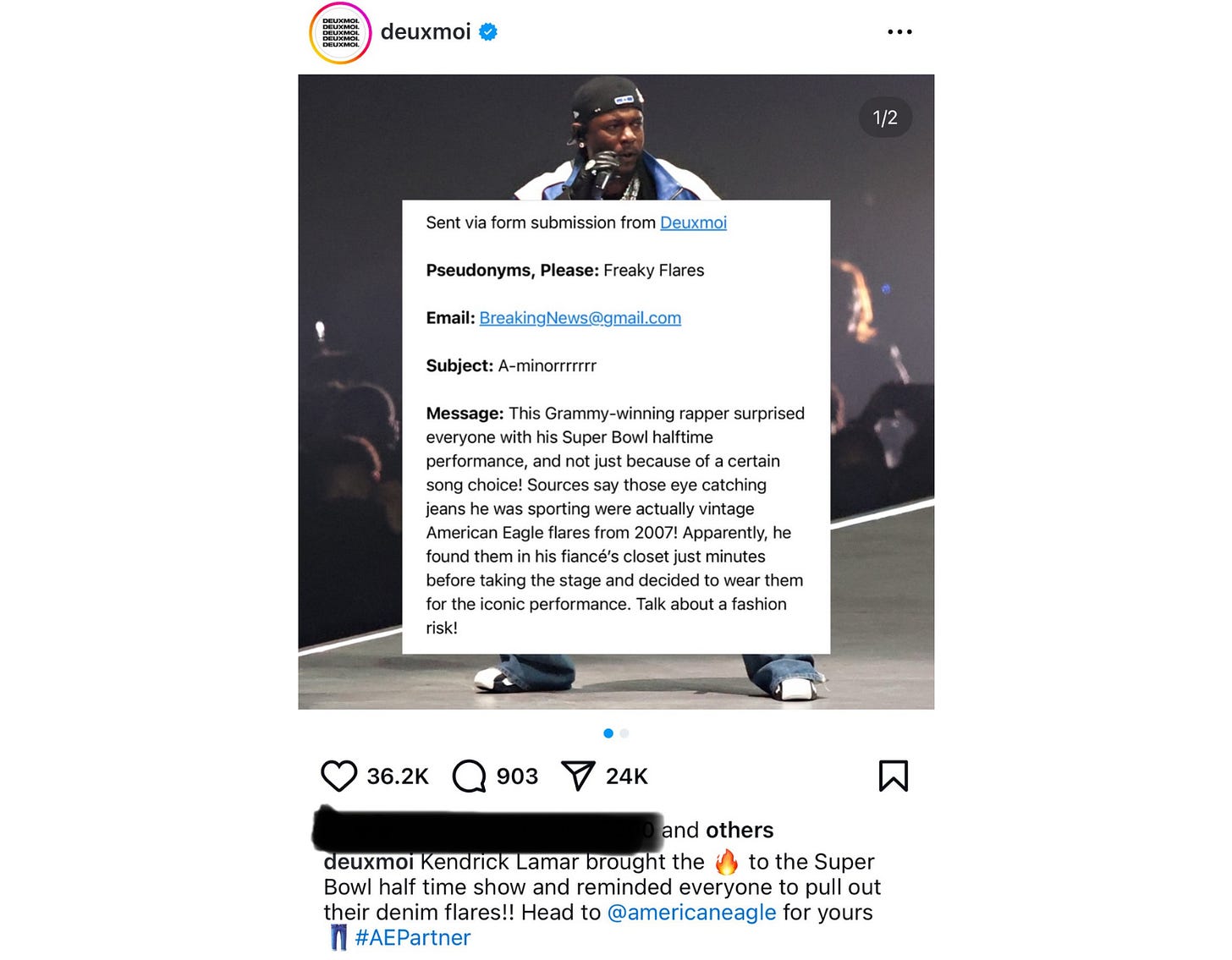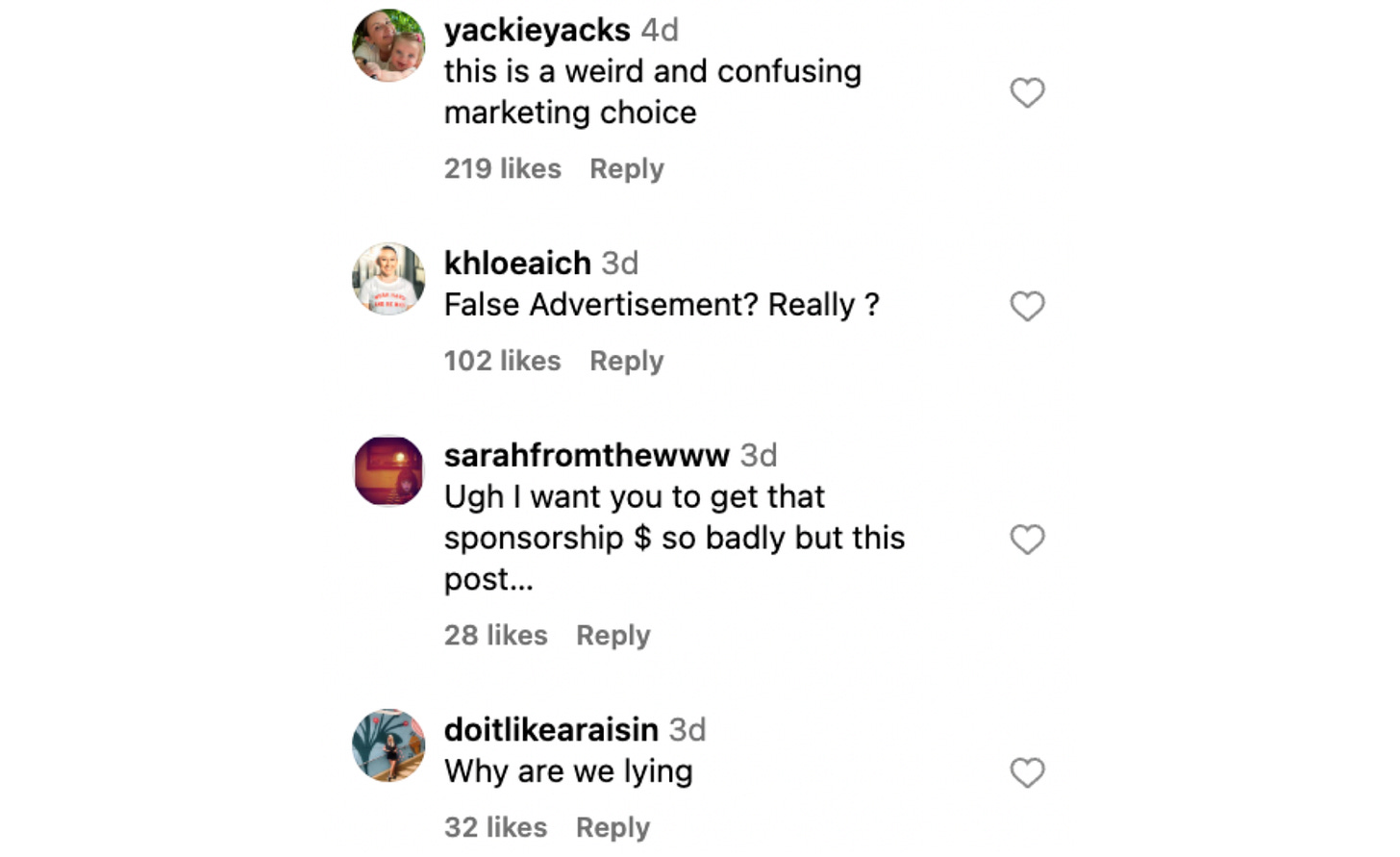The Case for Posting Less
Plus four post formats to try this week, the impact of repackaging low performing content, and more.
I saw a post that claimed you can tell something was written by AI if it includes lots of em dashes. As a frequent em dash user, I’d like to formally state that I do not use AI to write this newsletter. Sorry that I find “—” to be the perfect punctuation!
Is now a good time to admit that I’ve actually never used ChatGPT or any sort of generative AI tool? It’s a fact that causes people to tell me I’m going to “fall behind”. I personally believe the hours spent working through big ideas is time well spent. Creative work isn’t always efficient! Weird sentence structure adds personality! Side effects of being a stubborn Aquarius, I suppose.
Obviously I enjoyed this article shared in the Link in Bio Discord about a study that showed “as humans increasingly rely on generative AI in their work, they use less critical thinking, which can ‘result in the deterioration of cognitive faculties that ought to be preserved.’” Makes you think!
Today’s newsletter covers:
The case for posting less
Four post formats to try this week
A marketing lawyer's take on that American Eagle sponsored post
The impact of repackaging low performing content
A very good video about A Bug’s Life
The Case for Posting Less
Working in social media can sometimes feel like one big sprint to fill a calendar. An endless pursuit to find the “perfect” amount of times to post per week. Sharing something, even if you know it’s not the most engaging, because of some imaginary quota you’ve made for yourself.
Lately I’ve been asking myself—what if we all posted less?
In a previous newsletter I shared a quote from Guillaume Huin, Senior Marketing Director at McDonald’s, about how often the brand posts. He said, “Usually we try to post 3 times a week max…the question is always : do we have something to say or do we have to say something. If it's the latter, stay quiet - no one wakes wondering what will McDonald's post today.”
Early in my career I operated from a “we have to say something” mindset. I spent so many hours trying to stay above water with my content calendar, that I barely had any time for more high-impact posts. Ironically, if I take a second to think about some of the most engaged posts I’ve worked on, many of them came about from a last-minute “wait should we do this?” text message.
By worrying less about hitting a specific amount of posts per week, McDonald’s is able to leave room to react quickly to cultural moments with posts like this and this—while also clearly investing in smart, forward-looking creative for campaigns. I dug into the numbers of some other popular brands on Instagram to see how often they were posting—Liquid Death averaged around two posts per week in 2024, Xbox averaged around three posts per week, and Nutter Butter, one of the most talked about brands last year, averaged around 2 posts per week.
Let me state the obvious here that these are all huge corporations with lots of existing awareness, and smaller brands often need to post a lot in order to grow. I think my point is less about X amount of posts per week being some magic number (there is no magic number!), and more about only posting when you have something to say. For some brands, that might be once a week (that’s about how often the popular show Boy Room posts), for other brands that might be five days a week (that’s about how often Oh, Mary! posts).

I think a big question to ask is: what kind of creativity could we unlock if we gave ourselves permission to post less?
It’s a strategic shift—operating from a scarcity mindset (we have to say something today) to an opportunity mindset (do we have anything to say today?). The results can look like a long-planned social series that rolls our once-a-week or an of-the-moment post that taps into a trending moment.
I know selling through the idea of posting less can be difficult, so I recommend starting with a test. Here’s how I’d structure it:
Pitch management on a trial period for posting less—lay out the reasoning for the test and what the goals are.
Create a system that allows your brand to move quick when you do have “something to say”. Maybe it’s a Slack channel or text message group for quick collaboration. Get design team buy in for speedy asset creation.
Lay out new approval process, which will likely need to move quicker than existing one.
Be picky about what gets posted. If it doesn’t feel shareable or fun to you, it certainly won’t to your audience. Again, the goal is for everything you post during this trial to feel really good.
At end of trial period, review the analytics to make a data-informed decision on how best to proceed. Be sure to look at total engagements along with per-post engagements.
Four Post Formats to Try This Week
Writing on a cup. Starbucks’ new handwritten cup policy has turned into a whole trend of writing lengthy monologues on coffee cups. This one likely only works for movie studios, streamers, or media companies that have access to recognizable IP. A creator did it with The Social Network here and another creator used a Family Guy quote here.
Go back in time. A lot of 90s on the mood boards, not enough 1500s. I loved this Substack note from
that referenced a post from Rijksmuseum of earrings from various paintings in their collections from the 1500s through the 1800s. The museum’s original post has 54K likes. I love the idea of a modern jewelry brand creating paintings in this style to show off a new collection. Crown Affair nodded to marble sculptures in a fun way at the end of this post.Educational collage template. This one is a template mostly creators are using to educate around certain topics…but in a fun way. The original one was on flowers but there are also versions on whales and pigeons. I would credit the original creator if you try this format. Shout out to Silence, Brand! for bringing this one to my attention!
Feels so good. This text-based format has been circulating for awhile, but feels fairly evergreen. McDonald’s did it with “i bet being an ice cube in a mcdonald’s sprite feels so good” and CAVA did it with “I bet getting pickled feels so good for an onion”.
“Being unhinged does not mean disregarding ethics and laws”
Last week gossip Instagram account DeuxMoi shared a sponsored post with American Eagle. It was a “blind item” that Kendrick’s Super Bowl jeans, despite being widely reported as Celine, were “actually vintage American Eagle flares from 2007!”. The sponsored post uses a photo of Kendrick Lamar and is disclosed with #AEPartner.
I asked marketing lawyer Robert Freund what might be wrong with this from a legal perspective and he told me he saw two major issues:
Unless American Eagle has an agreement with Kendrick permitting them to use his name, image, and likeness in advertising, AE could be liable for violating his publicity rights through affiliate or influencer content like this.
If those are not AE jeans, then AE is potentially liable for false advertising.
He went on to say, “If AE knew about this and approved it before it went live, that just makes the situation worse for AE. Nothing should really surprise me anymore, but it would be stunning to me if AE permitted this.”
Meanwhile, the marketer behind the post shared on LinkedIn how much of a success it was. Ryan Benson, creative director of LOUDMOUTH and Editor of Silence, Brand!, commented on it calling out that their audience didn’t seem too pleased with being lied to. The marketer responded with “As a social media menace, Ryan, I would think you’d appreciate this.” Ryan has worked on plenty of chaotic-good social strategies (including Nutter Butter), but this didn’t sit right with him. He told me, “Being absurd or unhinged does not mean disregarding ethics and laws…It does not mean you can just lie to your audience.” The original LinkedIn post is now deleted but the sponsored post remains live.
A Few Quick Links!
Great post from the Chief Brand Officer at Bobbie about the importance of repackaging low performing content (that you believe in!) into new formats. The original post had 128 engagements. The repackaged version? 38,958.
New York Times goes all-in on internal AI tools. Semafor reports, “The New York Times is greenlighting the use of AI for its product and editorial staff, saying that internal tools could eventually write social copy, SEO headlines, and some code.”
Good job, Eagles admin. Normalize telling your audience you’re taking the week off.
I feel this in my bones. A Bug’s Life is a masterpiece.
I’m on Anne Able-tok. Anyone else?? This made me want to buy a Jenni Kayne sweater.
New type of AI video dropped. A popular comment: “my mom would think this was real.” Creators are riffing on it with their own versions like here and here.
Speaking of AI, was interesting to see how Crown Affair’s audience reacted to a post made using AI. Most seemed to think it was real and adorable, while some called it a “a cop out”.
Thanks for reading! Let’s talk about it all in the Discord.










I am so here for posting less! I work for a hotel brand and the one question I ask myself when putting together social calendar is - "Is it of value to our audience?" In other words, will they share it with a friend, will they swipe to see more, will they save the post. Otherwise, it just clutters their feed and eventually thanks to the algorithm our content will stop showing up on their feeds altogether.
He said, “Usually we try to post 3 times a week max…the question is always : do we have something to say or do we have to say something. If it's the latter, stay quiet - no one wakes wondering what will McDonald's post today.”
What an absolute cracker of a line! Makes you think